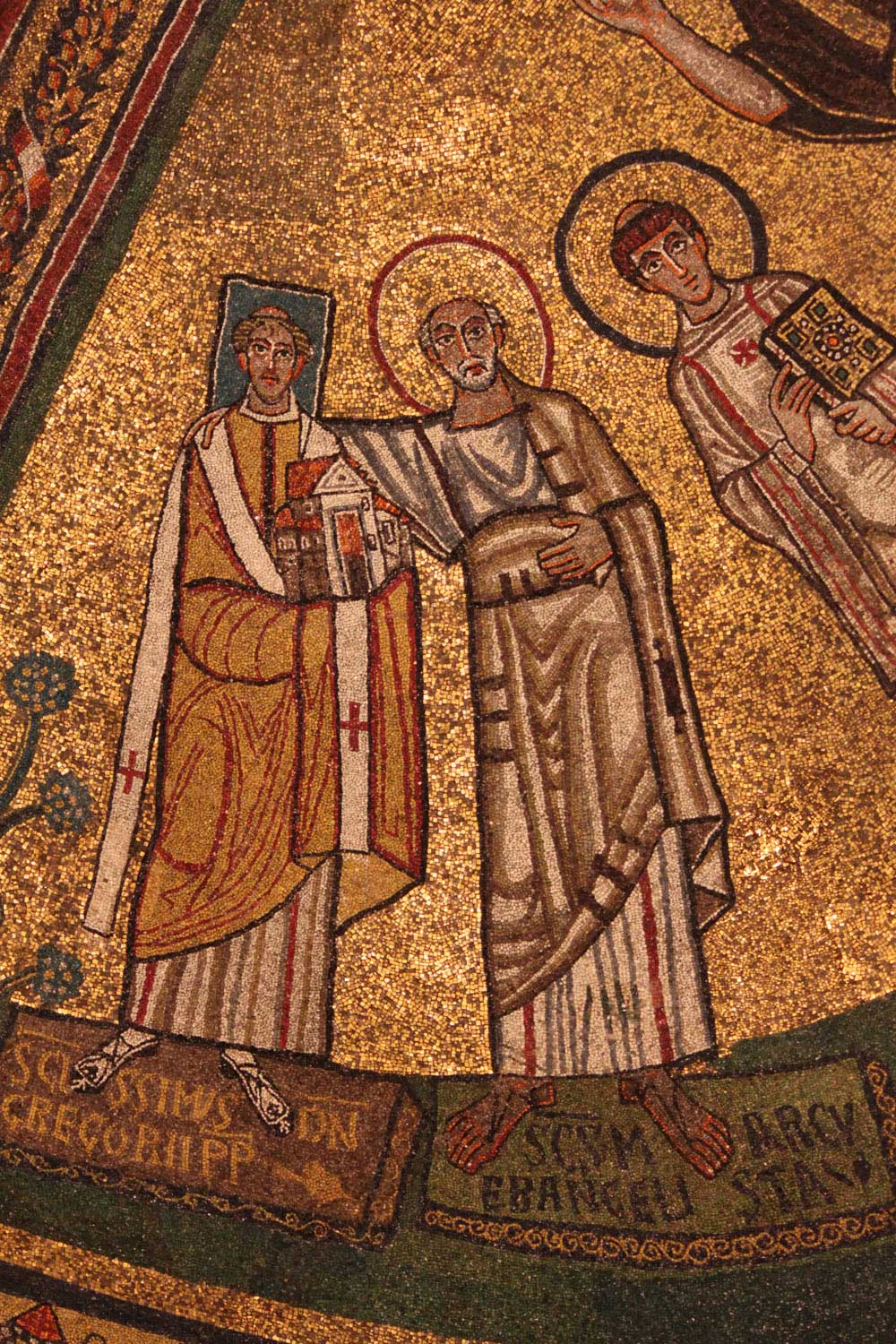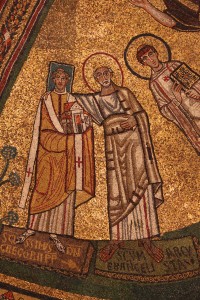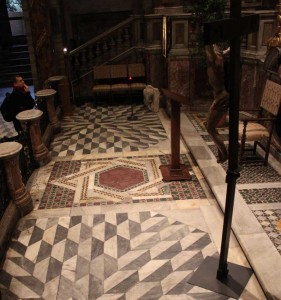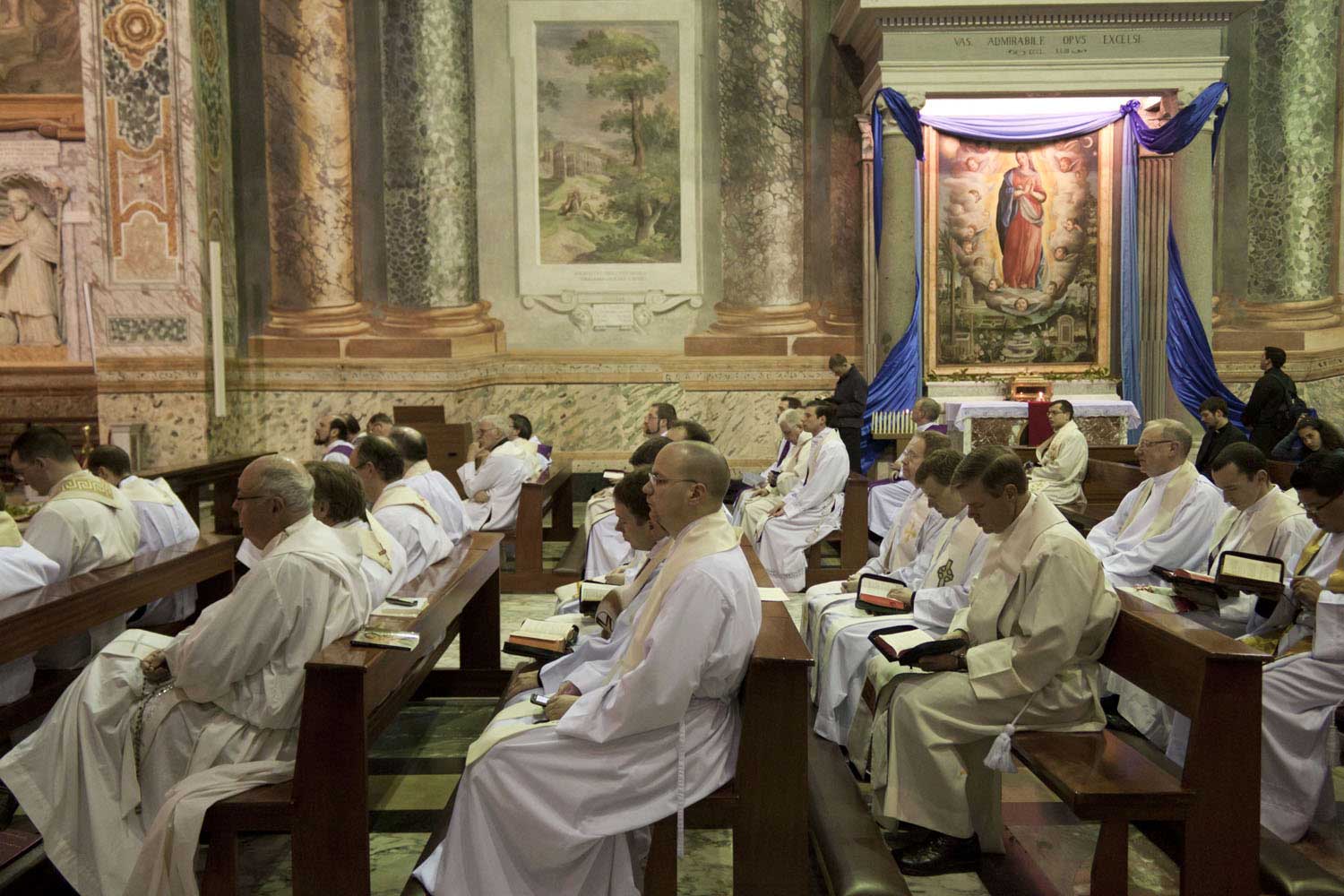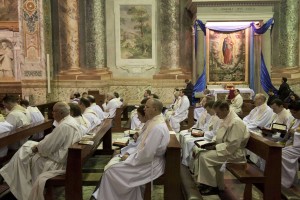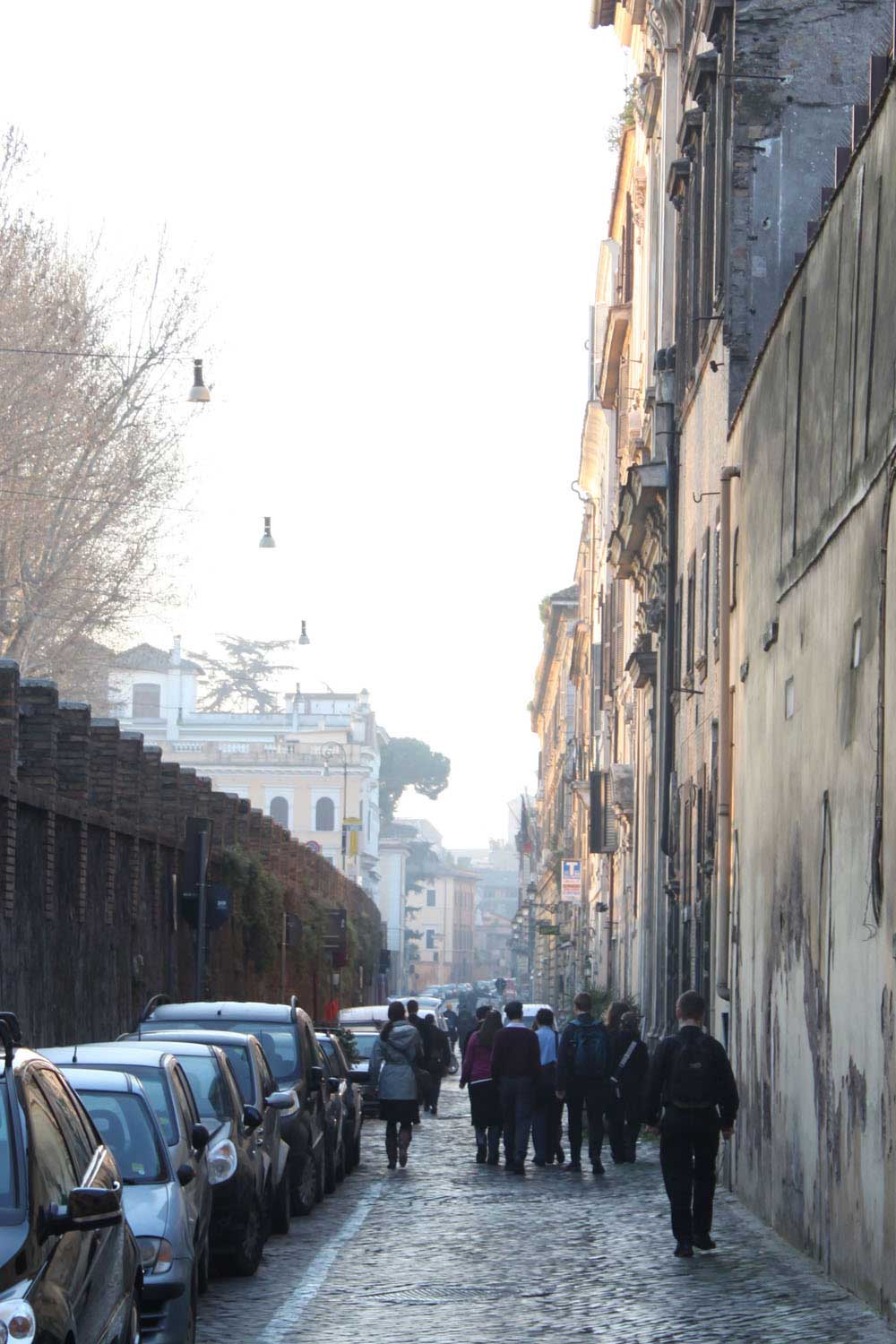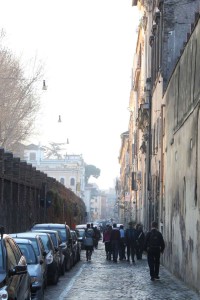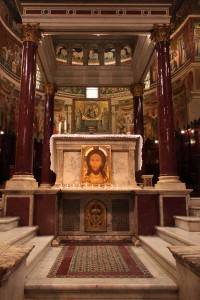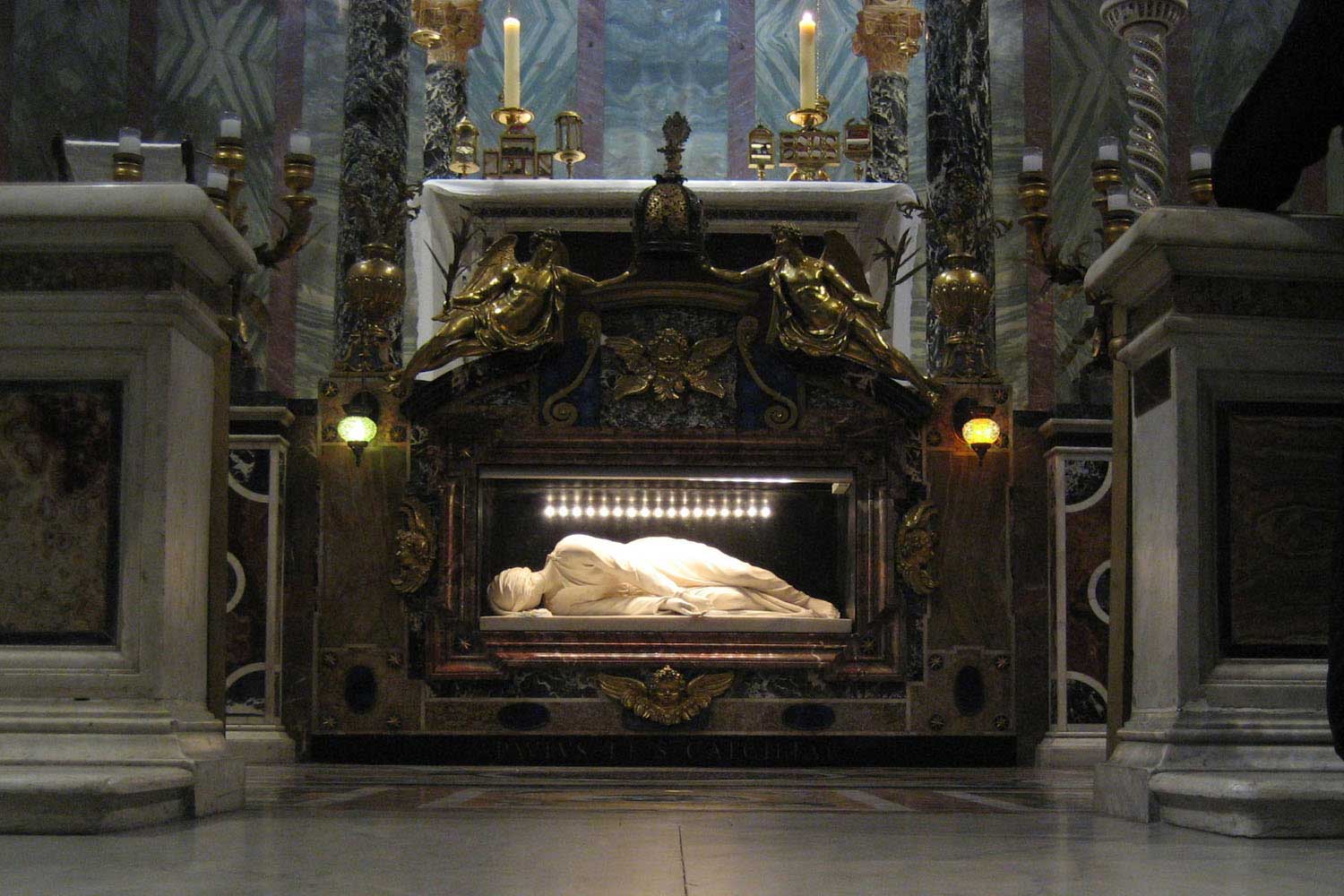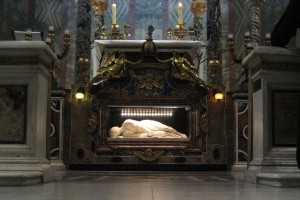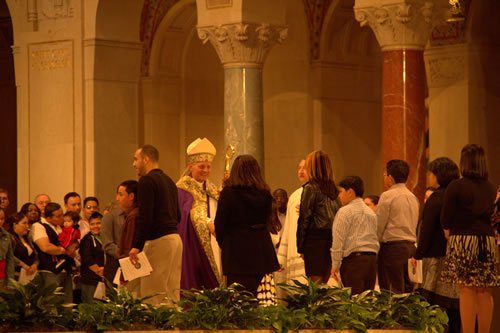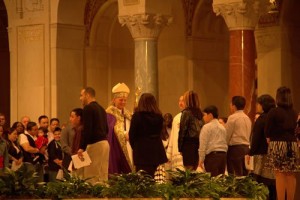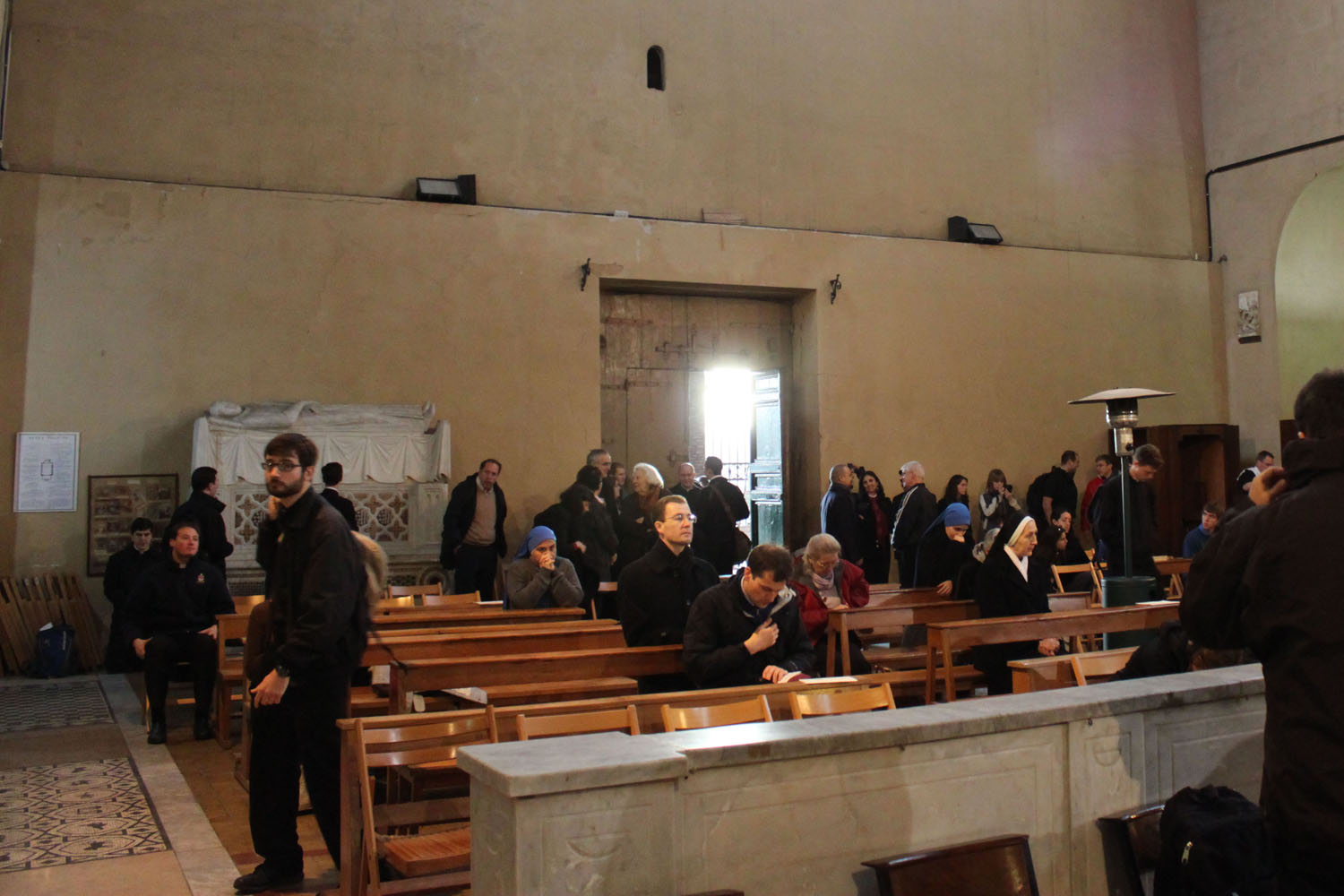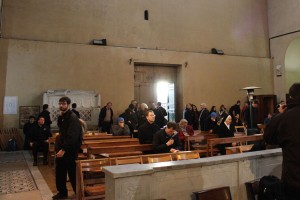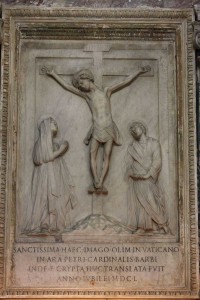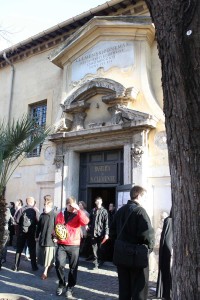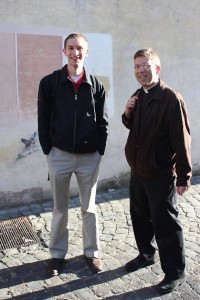Binding heaven and earth
Today’s Basilica of St. Mark recalls not only the evangelist Mark, but a holy Pope of the same name who constructed a basilica here in the mid-fourth century.
This was replaced by another basilica in the sixth century and a third in the ninth century. What we have now is the third church, whose most notable addition is the beautiful mosaic depicting twelve lambs heading from Jerusalem and Bethlehem towards the Christ. A rather typical image in mosaics, here we see an insightful and somewhat humorous addition as St. Mark the Evangelist rests his hand on the shoulder of Pope Gregory the IV of the ninth century. The image seems to recall the bond between saints in Heaven, represented by St. Mark the Evangelist, and saintly Christians still on earth, represented by Pope Gregory, whose blue halo indicates that he was still living at the time of the mosaic’s construction. Such a bond exists most strongly during the Mass, when the angels and saints in Heaven “gather” to celebrate with us, but even outside Mass the “Church triumphant” is praying for each one of us.
Sometimes God chooses the “little way”
Perhaps this or other articles of the Faith can seem trifling or irrelevant at times, but today’s first reading (2 Kgs 5:1-15b) gives us reason to stop and reconsider. Naaman, commander of the Syrian army, travels to Israel to be healed of his leprosy by Elisha the prophet. Apparently expecting Elisha to amaze him with some incredible and awe-inspiring act, Naaman is disappointed to hear Elisha’s rather banal counsel: “Go and wash seven times in the Jordan, and your flesh will heal, and you will be clean.”
Though Naaman indignantly intends to return home, his servants are wise enough to advise him to follow through on Elisha’s counsel. “My father,” they said, “if the prophet had told you to do something extraordinary, would you not have done it? All the more now, since he said to you, ‘Wash and be clean,’ should you do as he said.”
This story not only recalls the fact that God’s ways often surprise us, but also points especially to the fact that God often uses rather simple, “small” means to accomplish great effects, whenever we act out of faith and hope in Him. One might think of many Gospel instances of this truth, such as a woman simply reaching out to touch Jesus’ tassel to be healed (Luke 8:40-48), or a centurion expressing great respect and trust in his authority (Matt. 8: 4-13). One could also think of the countless ways Christians since the first centuries have placed their trust in God’s power to heal and bestow graces through the veneration of relics, saints, and holy sites, beginning even in the times of the apostles (see Acts 19).
Whether it be devotion to the saints, the belief that Jesus can forgive and strengthen through the Sacraments of Reconciliation and the Eucharist, or the conviction that one can grow closer to Christ through prayer, fasting, and almsgiving, God challenges us to trust that He can work miracles if we trust him. This Lent is the perfect opportunity to return to not only accepting Christ’s words as true, but also act on them in even the “smallest” of ways.
Written by Timothy Graham
Photos by Fr. Justin Huber

